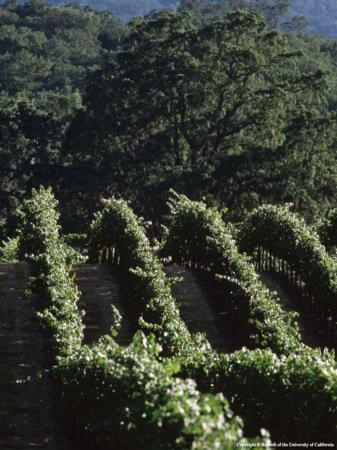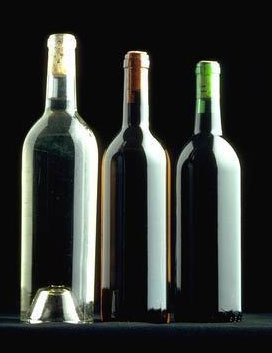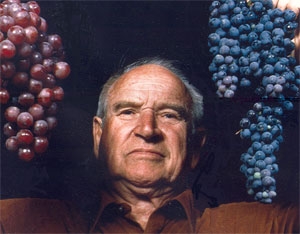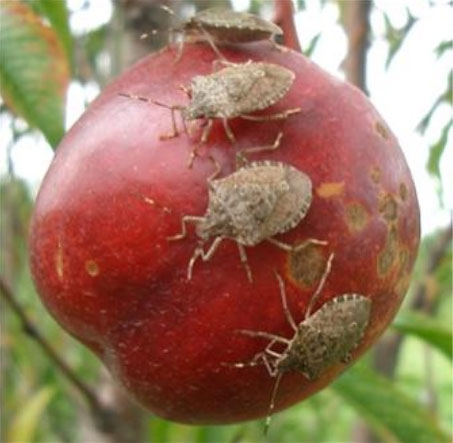Posts Tagged: viticulture
UC Davis professor studied old Lake County vine
To commemorate the 150th anniversary of Lake County, the Lake County News is publishing a series of local historical stories. This week, the focus is on viticulture.
Within a quarter century of the county's 1861 establishment, it boasted 600 acres of vineyards. One vineyard was purchased in the late 19th century by flamboyant British actress Lillie Langtry. She sold the property in 1906. Prohibition and the vineyard's destruction soon followed.
But according to local legend, Langtry's legacy lives.
"Rumor has it that one of California’s oldest vines continues to grow on the Langtry Estate at the top of Tephra Ridge. It is thought to be part of Mrs. Langtry’s original vineyard," the article said. "Professor Ohmo of UC Davis, one of the world’s experts on viticulture – now deceased – came across the vine some years ago, smiled and said, 'This is one of the oldest vines in California and I think it is a Syrah.'"
The report didn't source these rumors. However, a 1989 Los Angeles Times article confirms some of the facts. The Times article said Guenoc Vineyards in Lake County discovered eight vines believed to have been planted by Lillie Langtry.
Reporter Dan Berger wrote that UC Davis viticulture professor Harold Olmo (spelled differently than in the Lake County News account) visited the ranch and said he felt one of the old vines might be original Syrah, a grape of the Rhone. Langtry's wine maker, French-born and -trained Henri Deschelles, had imported some grapevines from Europe, and this red-wine vine might have been one of them.
When discovered, the old vines had not been cultivated or irrigated for more than 80 years, but survived and outlived even big trees that had grown in their midst. One vine had wrapped itself around a pine tree and strangled it.
The Times said Olmo took some of the leaves and seeds back to Davis in order to pin point the variety and determine whether the genetic stock could be converted into a commercial crop.
In his obituary, Olmo was referred to as the "Indiana Jones of horticulture" and quoted as declaring, "Give me enough time and I'll grow a great grape on the moon!" Alas, there is no mention whether he was able to confirm the origin of the supposed Lillie Langtry Syrah.
Exotic stink bug threatens nearly nationwide damage
Another pest has been added to the list of exotic insects that dishearten California farmers. The brown marmorated stink bug, a destructive native of Asia, has been seen this spring in 33 states, including California, Oregon and Washington, according to the San Francisco Chronicle.
"All that we do know for certain is that a tremendously large population went into overwintering in fall 2010. So, if they survived, there could be a very large population emerging in the spring," the story quoted Tracy Leskey, a research entomologist at the U.S. Agriculture Department's Appalachian Fruit Research Station in Kearneysville, W.Va.
The stink bug will feed on almost anything, including cherries, tomatoes, grapes, lima beans, soybeans, green peppers, apples and peaches. When it feeds, it leaves behind an ugly spot that renders the fruit or vegetable unmarketable.
UC Cooperative Extension farm advisor Stephen Vasquez and viticulture specialist Matt Fidelibus warned of the new pest's potential to harm California grape crops in a post to their new Viticulture blog. They wrote that damage can be substantial when BMSB populations are not identified early and managed appropriately. Growers and wineries are also concerned that the “stink” from any bugs accidentally crushed in wine or juice grapes could taint the product with off flavors.
"One might define this thing as the bug from hell," U.S. Congressman Roscoe Bartlett told the Chron. "If I was a mad scientist doing gene splicing and putting together a bug that would really be nasty and I was turning it loose on my enemy, I probably couldn't do a better job."
The Chronicle said the best hope for farmers that have brown marmorated stink bugs is the insecticide dinotefuran, the active ingredient in the commercial products Venom and Scorpion. The chemical compound is labeled by the Environmental Protection Agency for use on vegetables, grapes and cotton, but not in orchards, as it is in Japan and other Asian countries.
More information about the BMSB and current research is available in a streamed PowerPoint presentation by USDA's Lesky posted on the web.
A weak economy is pinching the premium wine industry
Like many business sectors, the California premium wine industry is suffering under the weak economy, according to an article published over the weekend in the Santa Rosa Press-Democrat.
Wine produced in Napa and Sonoma counties used to be cheap alternatives to French wines. Now connoisseurs are turning to less expensive wines from Australia, South America and California's Central Valley.
UC Cooperative Extension viticulture farm advisor Glenn McGourty told reporter Glenda Anderson that he believes consumers will return to North Coast wines when the economy improves.
“Lodi is kind of like the person you go out with that's really hot but you don't want your parents to see them,” he was quoted.
The story opened with the travails of McDowell Valley Vineyards of Hopland, which is facing possible foreclosure Nov. 5. McGourty said the McDowell situation is not unique.
“A lot of people are on the ropes,” he was quoted.
Wineries are cutting back on how much they buy and the prices they'll pay for grapes.
The McDowell vineyard reported that the value of its premium winegrapes has dropped from $1,400 a ton to about $700 a ton. A winery offered to buy 32 tons of McDowell sauvignon blanc at $600 a ton. In Lodi, winegrapes average about $500 a ton, the story said.

The wine market decline is putting some people out of business.
Associated Press profiles two Latino family wineries
Latino winemakers are rare, but some are finding success by catering to Latinos developing a taste for fine wine, according to an Associated Press article by Olivia Muñoz. The story ran in the Los Angeles Times, Bloomberg Businessweek, on the ABC News website and other media outlets.
The article profiled two Latino family wineries whose founders started out working in the fields.
"I would work my regular shift and then pester the vineyard manager with questions until I knew everything he knew," Reynoldo Robledo of the Robledo Family Winery near Sonoma was quoted.
The winery sells 20,000 cases per year bringing in about $1 million.
Ceja Vineyards in Napa president Amelia Ceja and her husband Armando worked in vineyards as children, and also obtained formal education. Armando earned a degree in enology and viticulture from UC Davis, and worked as a vineyard manager for other wineries before the family started their own, the story said.
Both vineyards were reported to be targeting the Latino market. Half of the Ceja Vineyard's wine club is Latino and the company promotes the wine at dinners pairing traditional Mexican dishes with Ceja Vineyard reds and whites. The Robledo Family Winery also built its business by catering in part to Latino wine drinkers interested in quality and a connection to their heritage.
Esau Herrera of the Hispanic Vintners Association, a marketing group with about a dozen members in California and Florida, told Muñoz that part of Latino vintners success comes from making a connection with Latinos.
"There are people like me who are very proud of our roots and don't mind plunking down $125 for a bottle of wine," Herrera was quoted.

wine
Shasta College teams with UCCE for winemaking class
A two-acre vineyard on the Shasta College campus will produce grapes for the school's growing wine-making program and a venue for collaboration with UC Cooperative Extension, according to an article in the Redding Record Searchlight.
Although the young vineyard is still about a year away from producing its first crop, the college is already working with UCCE to use the vineyard for research and community workshops.
“That’s been a good partnership,” Shasta College horticulture instructor Leimone Waite was quoted in the article. “We are trying to be a completely organic vineyard, which has been a real challenge.”
The vineyard is also used for instruction in some of Shasta College's 14 wine-related classes. Students plant, prune and train the grapevines. Some vines were purposely trained the wrong way so students can see what happens.
Shasta College is one of four in the 112-campus community college system to have a bonded winery. The designation allows the college to bottle wine with its own label. So far, Shasta College wine is not for sale, but it has been sampled at campus events.
The Shasta College's viticulture and enology program includes students seeking careers in the wine industry, as well as those who simply want to grow a few grapes and make wine at home.



